© 2025 MJH Life Sciences™ , Patient Care Online – Primary Care News and Clinical Resources. All rights reserved.
COPD Differs by Sex (and Other Recent Findings)
COPD phenotypes differ by sex and ICS are still overprescribed-2 findings that lead this month’s lung disease research review for primary care.
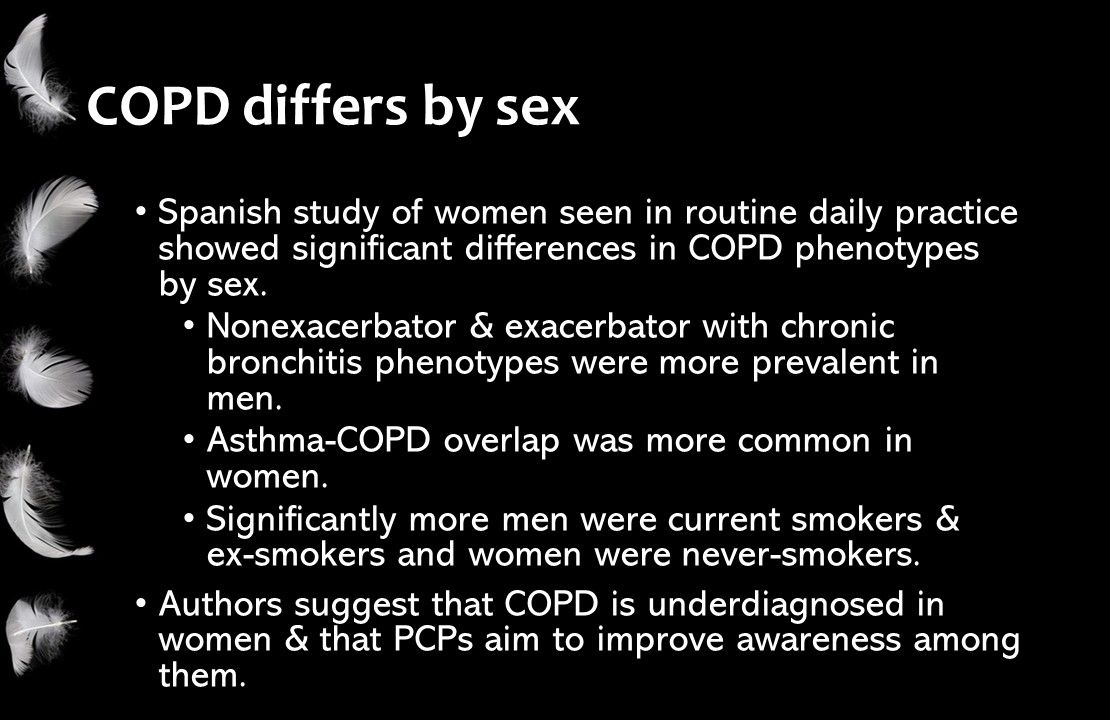
COPD differs by sex. Differences in COPD phenotypes by sex were significant in a study of women seen in routine daily practice in Spain. Nonexacerbator and exacerbator with chronic bronchitis phenotypes were more prevalent in men. Asthma-COPD overlap was more common in women. There were significantly more current smokers and ex-smokers among men and never-smokers among women. The authors suggested COPD is underdiagnosed in women and PCPs should aim to improve awareness among them. The study appeared November 5 in the International Journal of Chronic Obstructive Pulmonary Disease.
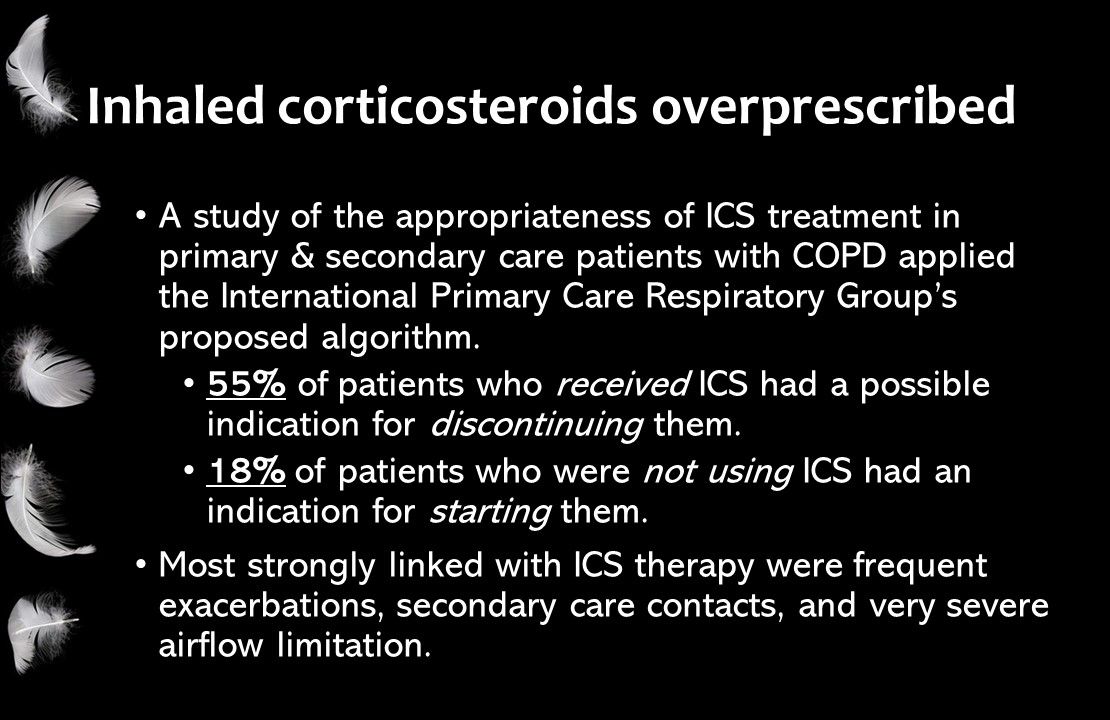
Inhaled corticosteroids overprescribed. When the International Primary Care Respiratory Group’s proposed algorithm was applied in a recent study of the appropriateness of ICS treatment in primary and secondary care patients with COPD, 55% of those receiving ICS had a possible indication for discontinuing them and 18% of those not using them had an indication for starting them. Frequent exacerbations, secondary care contacts, and very severe airflow limitation were most strongly linked with ICS therapy. The study appeared in the October-November issue of Respiratory Medicine.
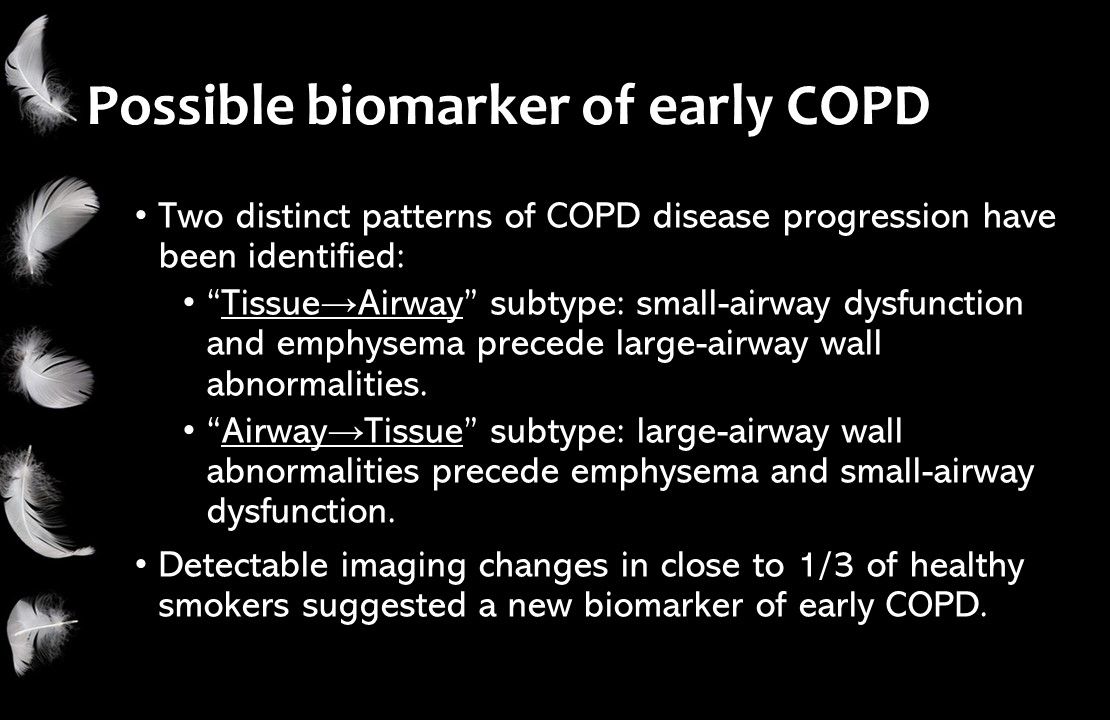
Possible biomarker of early COPD. Researchers identified 2 distinct patterns of disease progression in COPD: a “Tissue→Airway” subtype (70.4%) in which small airway dysfunction and emphysema precede large-airway wall abnormalities and an “Airway→Tissue” subtype (29.6%) in which large-airway wall abnormalities precede emphysema and small airway dysfunction. Close to one-third of healthy smokers had detectable changes on imagine, suggesting a new biomarker of early COPD. The study was published on October 28 in the American Journal of Respiratory and Critical Care Medicine.
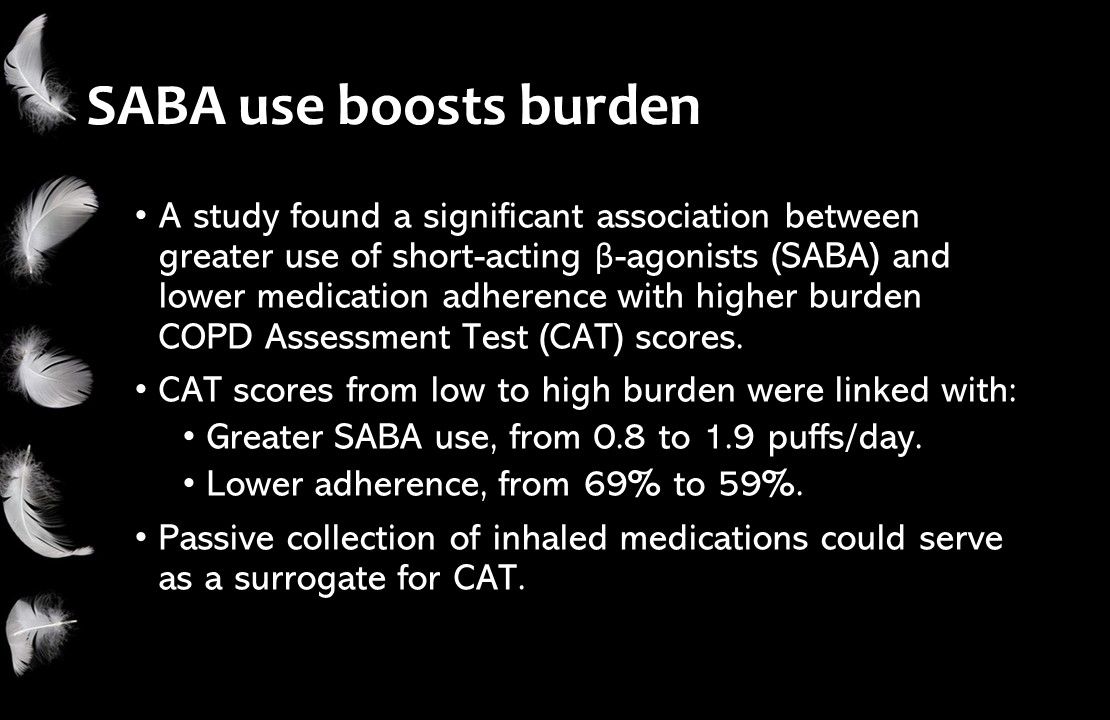
SABA use boosts burden. A significant association was found between greater use of short-acting β-agonists (SABA) and lower medication adherence with higher burden COPD Assessment Test (CAT) scores. Electronic medication monitors and a mobile app were used to track time and date of SABA use. CAT scores from low to high burden were linked with greater SABA use, from 0.8 to 1.9 puffs/day, and lower adherence, from 69% to 59%. Passive collection of inhaled medications could serve as a surrogate for CAT. The study was published in the October-November issue of Respiratory Medicine.
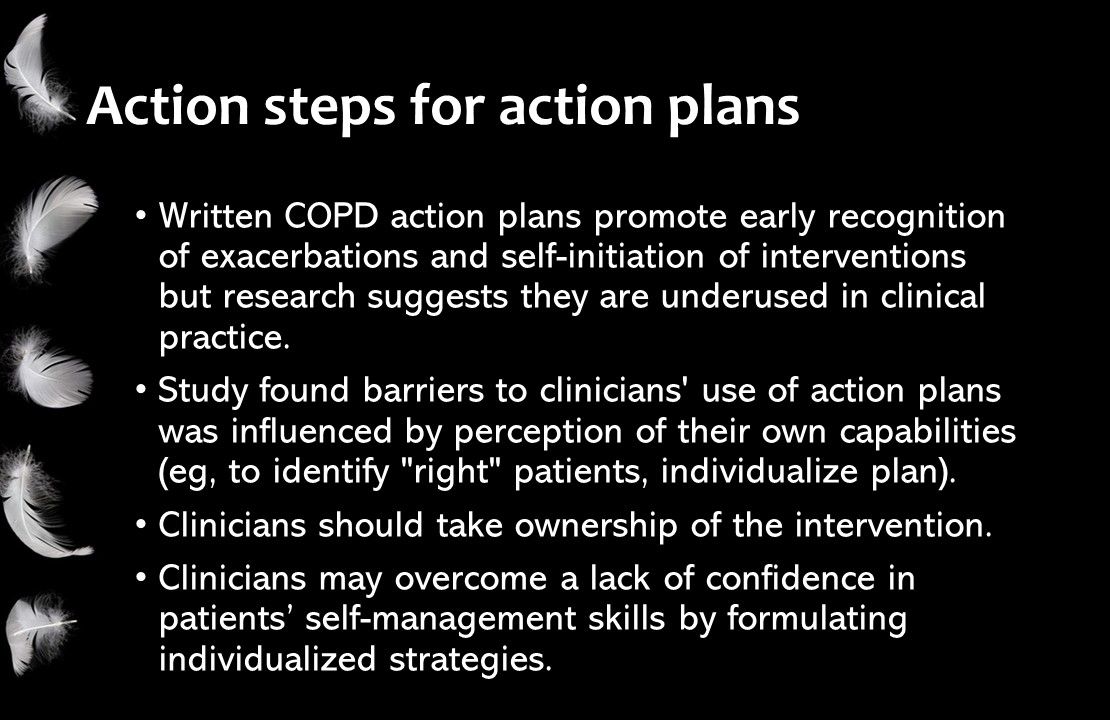
Action steps for action plans. Written action plans for patients with COPD promote early recognition of exacerbations and self-initiation of interventions, but they have been underutilized. So investigators identified barriers to and facilitators of action plans among clinicians: overcome lack of confidence by acquiring capabilities for self-management support (knowledge and skill), take ownership of the intervention, and overcome lack of confidence in patients’ self-management skills by formulating individualized strategies. The study was published online on November 6 in Patient Education and Counseling.
Possible biomarker of early COPD, inhaled corticosteroids overprescribed, SABA use boosts burden-these are some of the latest developments in chronic obstructive pulmonary disease (COPD) research. Scroll through the slides below to find concise summaries of key points for clinical practice.




